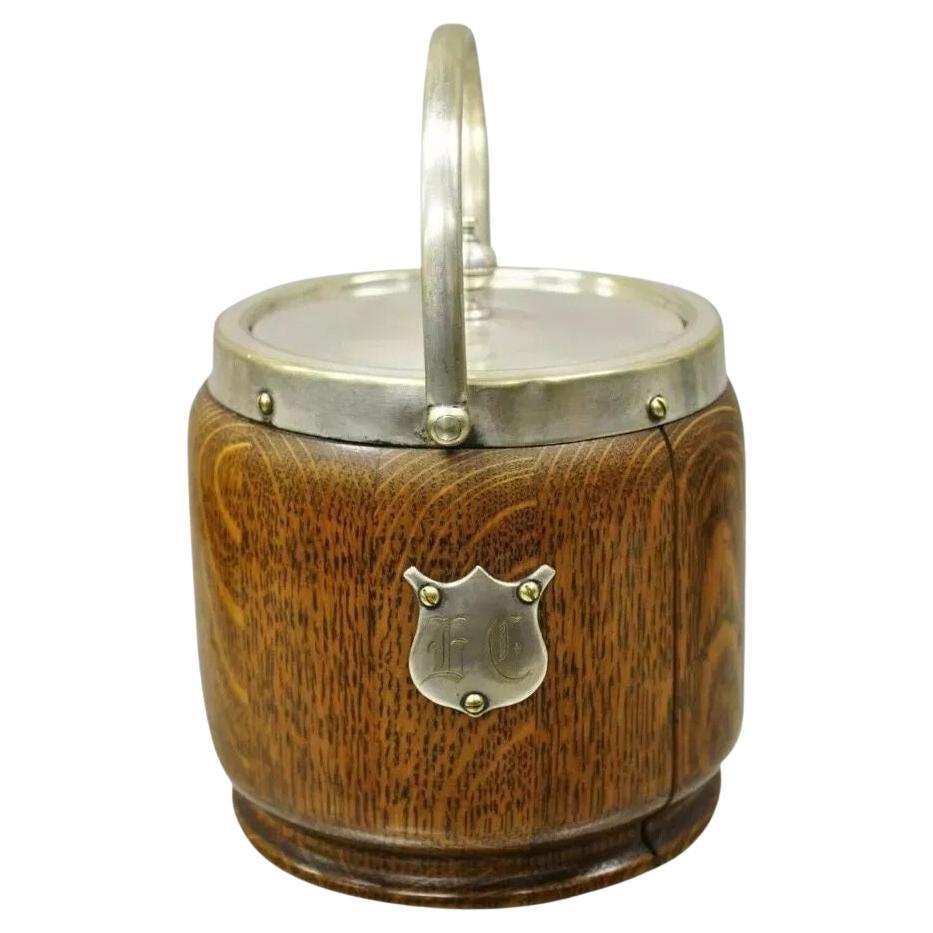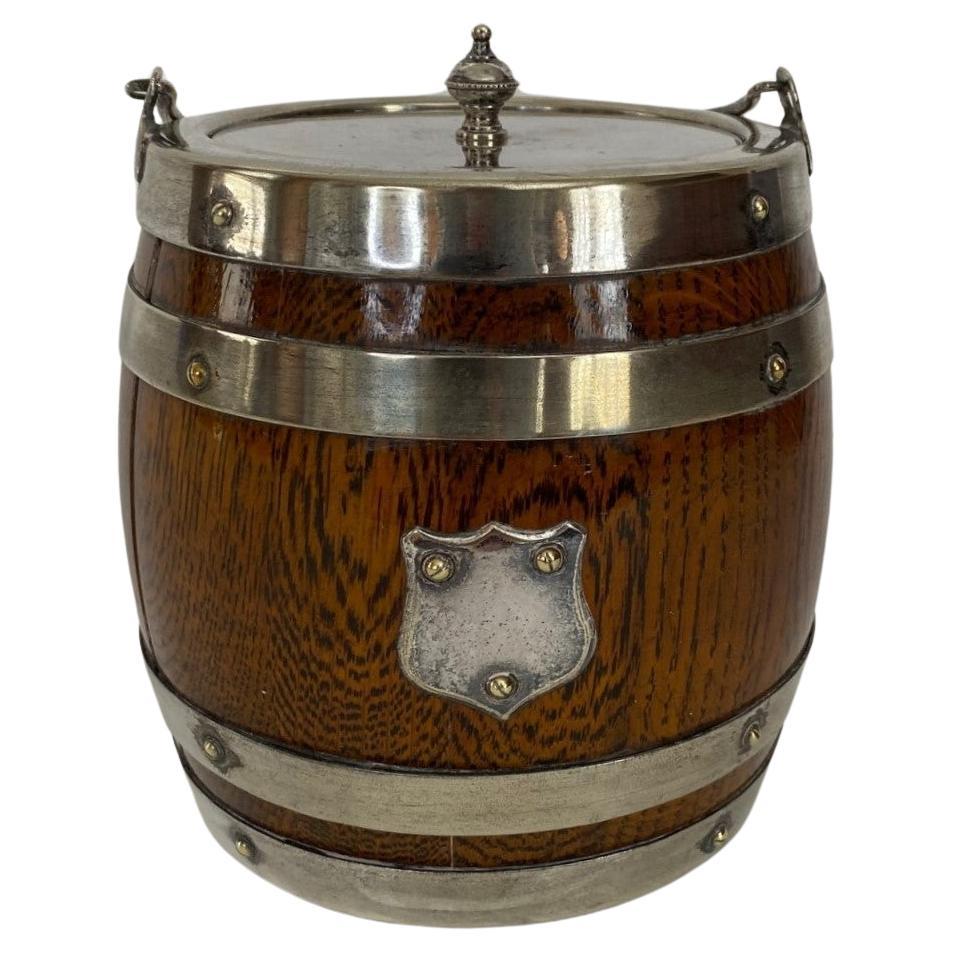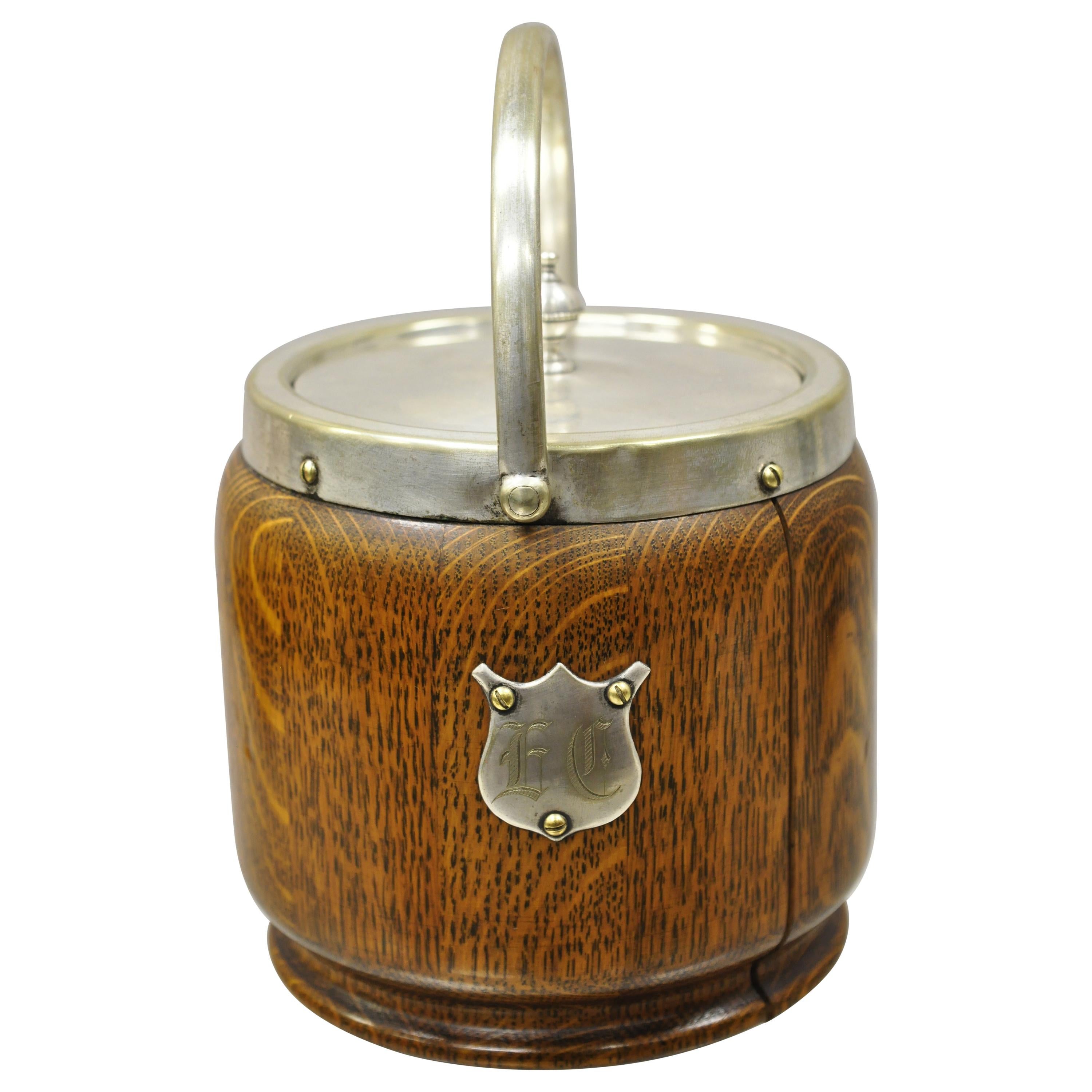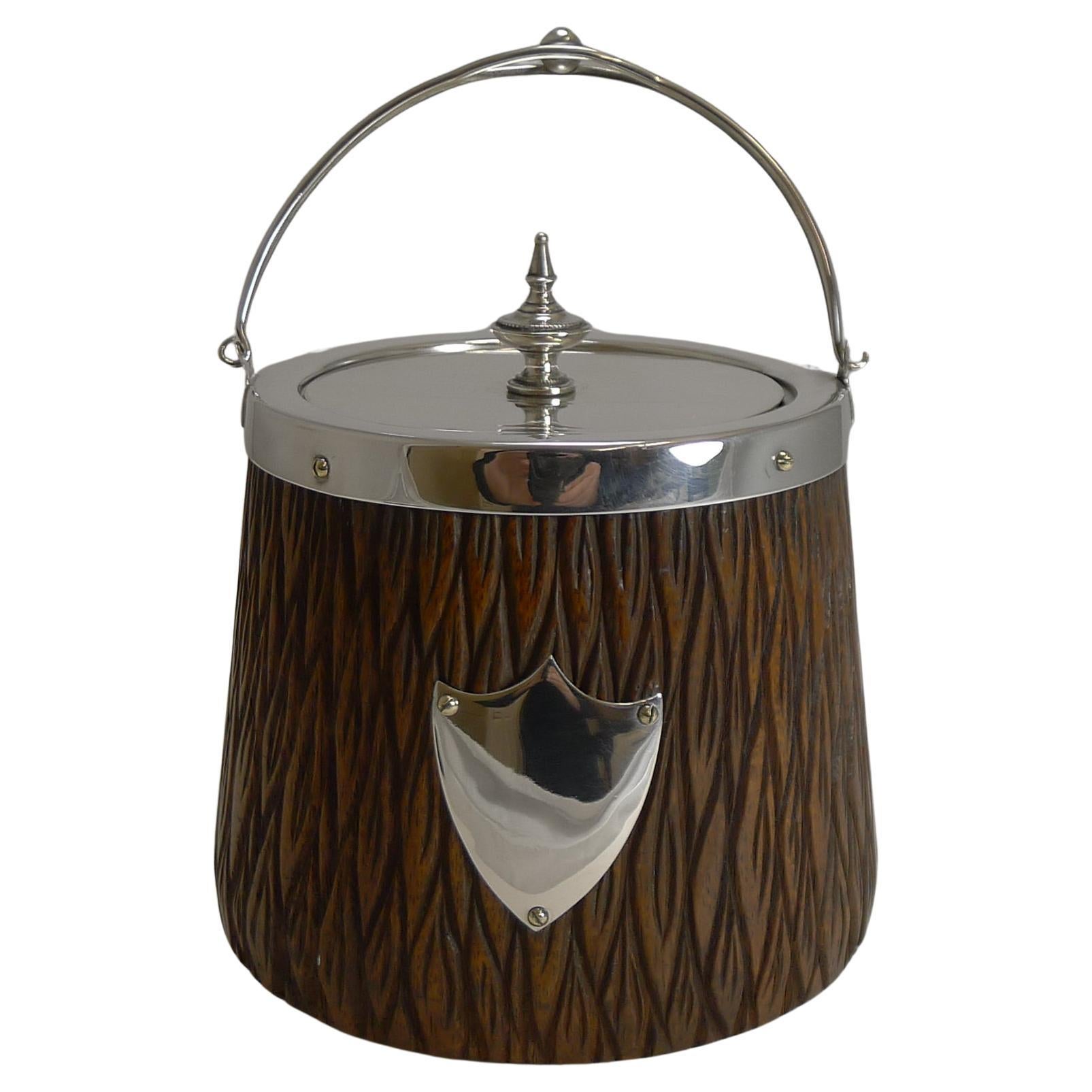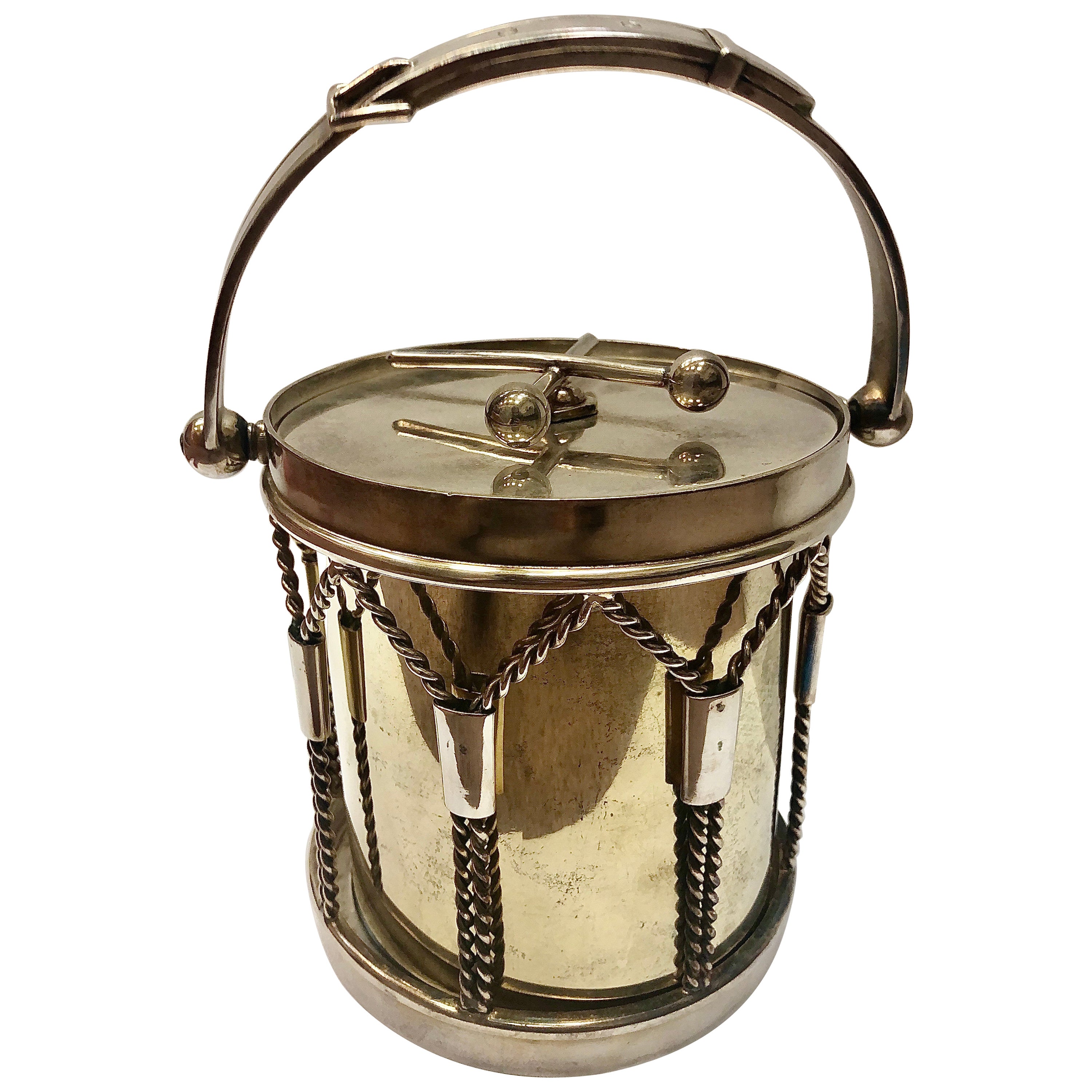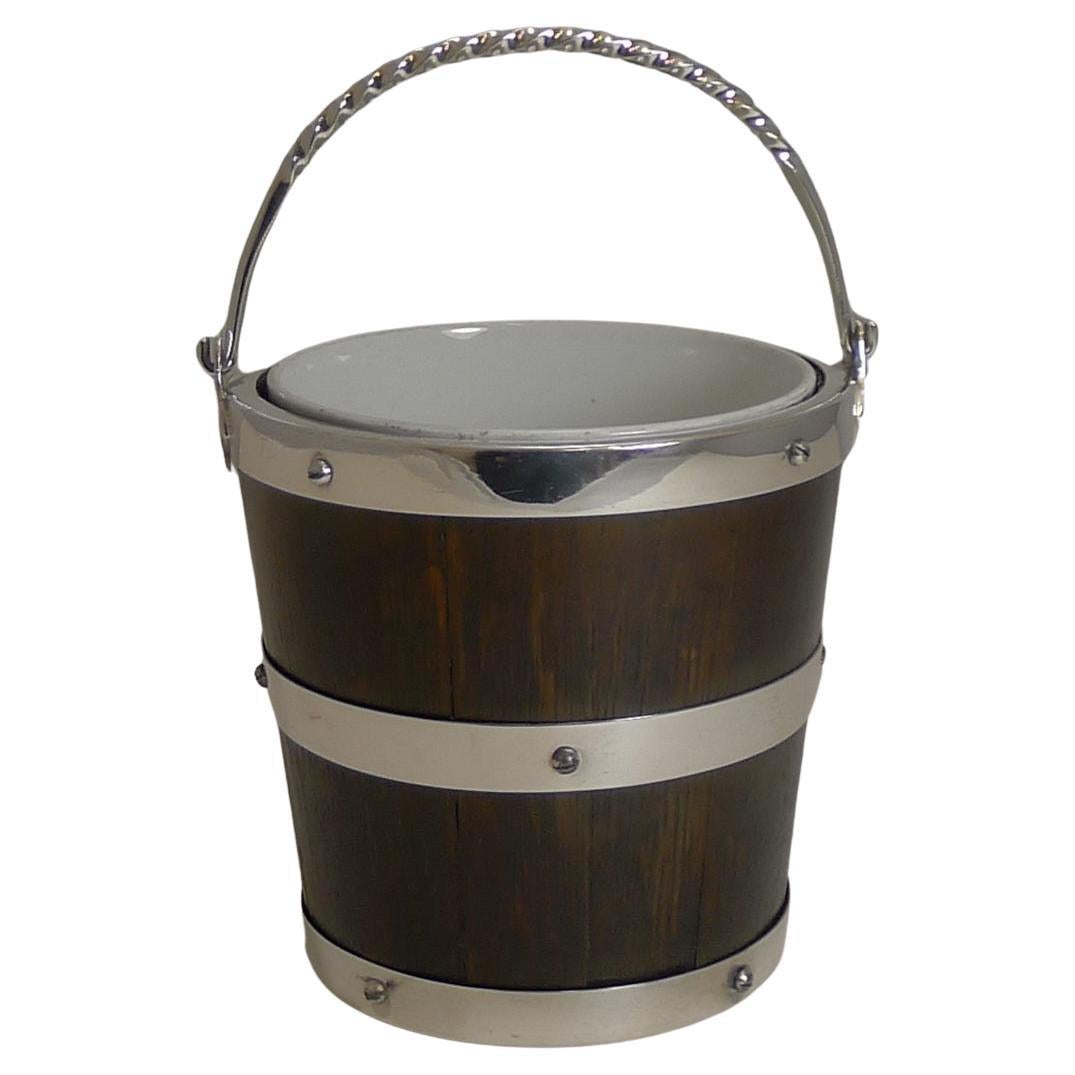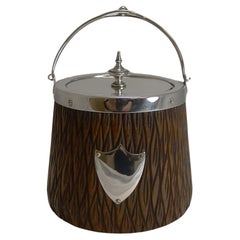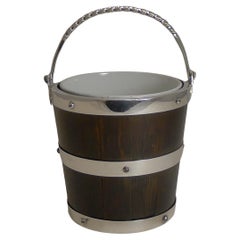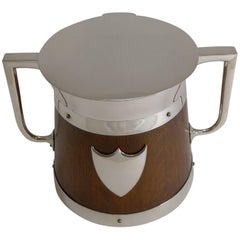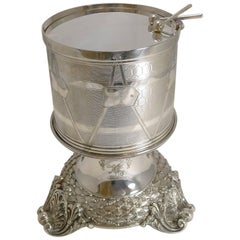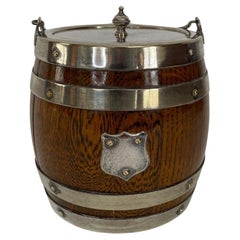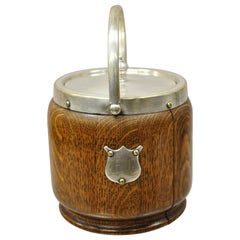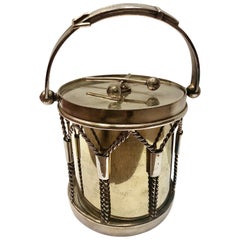Items Similar to Antique English Oak & Silver Plated Drum Form Biscuit Box or Barrel, circa 1890
Want more images or videos?
Request additional images or videos from the seller
1 of 7
Antique English Oak & Silver Plated Drum Form Biscuit Box or Barrel, circa 1890
$1,369.80
$1,712.2620% Off
£1,000
£1,25020% Off
€1,178.44
€1,473.0520% Off
CA$1,882.19
CA$2,352.7320% Off
A$2,106.52
A$2,633.1520% Off
CHF 1,099.44
CHF 1,374.3020% Off
MX$25,688.69
MX$32,110.8620% Off
NOK 14,071.36
NOK 17,589.2020% Off
SEK 13,320.34
SEK 16,650.4320% Off
DKK 8,794.52
DKK 10,993.1520% Off
Shipping
Retrieving quote...The 1stDibs Promise:
Authenticity Guarantee,
Money-Back Guarantee,
24-Hour Cancellation
About the Item
A wonderful Victorian biscuit box or barrel, always highly sought-after in this Drum form, I have probably not had one for three or four years, that's how scarce and hard to come by they are.
The fittings are made from silver plate with the lid topped with a finial in the form of a pair or drum sticks against an open piece of sheet music, both lavishly gilded. The interior retains the original glazed cream colour ceramic liner. The swing handle has a belt and buckle detail incorporated into it.
The box is unmarked but undoubtedly by John Grinsell. Victorian in era, dating to circa 1890. Excellent condition, measuring 5 3/4" in diameter; 5 3/4" to top of drum; 7 1/2" to top of drum sticks and 9 1/2" to top of handle when upright.
Item ID:39701.
- Dimensions:Height: 7.5 in (19.05 cm)Diameter: 5.75 in (14.61 cm)
- Style:Late Victorian (Of the Period)
- Materials and Techniques:
- Place of Origin:
- Period:
- Date of Manufacture:circa 1890
- Condition:Wear consistent with age and use.
- Seller Location:Bath, GB
- Reference Number:Seller: 397011stDibs: LU3365310031481
About the Seller
5.0
Platinum Seller
Premium sellers with a 4.7+ rating and 24-hour response times
Established in 1980
1stDibs seller since 2018
479 sales on 1stDibs
Typical response time: <1 hour
- ShippingRetrieving quote...Shipping from: Bath, United Kingdom
- Return Policy
Authenticity Guarantee
In the unlikely event there’s an issue with an item’s authenticity, contact us within 1 year for a full refund. DetailsMoney-Back Guarantee
If your item is not as described, is damaged in transit, or does not arrive, contact us within 7 days for a full refund. Details24-Hour Cancellation
You have a 24-hour grace period in which to reconsider your purchase, with no questions asked.Vetted Professional Sellers
Our world-class sellers must adhere to strict standards for service and quality, maintaining the integrity of our listings.Price-Match Guarantee
If you find that a seller listed the same item for a lower price elsewhere, we’ll match it.Trusted Global Delivery
Our best-in-class carrier network provides specialized shipping options worldwide, including custom delivery.More From This Seller
View AllAntique English Hand-Carved Oak and Silver Plate Biscuit Box / Barrel
Located in Bath, GB
A handsome and very unusual late Victorian / early Edwardian biscuit box made from solid English Oak, beautifully carved with a bark design.
The fit...
Category
Antique 1890s British Late Victorian Decorative Boxes
Materials
Silver Plate
Rare Oak & Silver Plated Ice Bucket - Ceramic Creamware Liner c.1900
By Atkin Brothers
Located in Bath, GB
Rarely found and highly sought-after ice bucket in English Oak in the form of a coopered bucket bound with silverplated banding with quality screwed construction.
The interior is lu...
Category
Antique Early 1900s British Edwardian Barware
Materials
Silver Plate
Antique English Oak and Silver Plate Biscuit Box by John Grinsell & Sons
By John Grinsell & Sons
Located in Bath, GB
A handsome and very stylish biscuit box dating to circa 1890 by the top notch silversmith, John Grinsell & Sons of Sheffield.
Made from solid English oak, the box is fitted with e...
Category
Antique Late 19th Century English Late Victorian Decorative Boxes
Materials
Silver Plate
$871 Sale Price
20% Off
Free Shipping
Magnificent and Rare Early Silver Plated Drum Biscuit Box on Stand, 1844
By George Richmond Collis & Co.
Located in Bath, GB
I would imagine this was a regimental presentation gift having had this top quality stand custom made in heavy cast silver plate by the finest of silversmith's Elkington and Co. The ...
Category
Antique 1840s English Early Victorian Decorative Boxes
Materials
Silver Plate
$1,917 Sale Price
20% Off
Free Shipping
Quality Antique English Cut Glass & Silver Plate Biscuit Box / Barrel, c.1860
Located in Bath, GB
A particularly good and unusual cut glass biscuit box which would equally make a wonderful ice bucket or pail.
Earlier than most of this type, it dates to around 1860, mid-Victori...
Category
Antique 1860s English Victorian Sheffield and Silverplate
Materials
Silver Plate
Rare Antique English "Elephant and Castle" Biscuit Box c.1890
Located in Bath, GB
An example of a biscuit box that I have never seen before and believe I may never see another.
English in origin, it is silver plated over Britannia Metal with a good finish with mi...
Category
Antique 1890s British Late Victorian Sheffield and Silverplate
Materials
Silver Plate
You May Also Like
Antique H.C. & C. English Silver Plate and Oak Biscuit Barrel with Lid and Liner
Located in Philadelphia, PA
Antique H.C. & C. English Silver Plate and Oak Biscuit Barrel with Lid and Line. Item feature silver plated ormolu, ironstone pottery lines, marked "H. C. &. Co." (Hammand Creake & C...
Category
Early 20th Century Unknown Other Tableware
Materials
Oak
19th Century Oak Biscuit Barrel with Silver Plate Bands & Top. Ceramic Liner
Located in North Salem, NY
Whatever you fancy...Keep your buns warm or elegantly offer ice on your bar...
This attractive 19th century Victorian English Oak lidded biscuit barrel with a white interior ceramic...
Category
Antique Late 19th Century English Victorian Barware
Materials
Silver Plate
$367 Sale Price
25% Off
Antique H.C. & C. English Silver Plate and Oak Biscuit Barrel with Lid and Liner
By Hammond, Creake & Co.
Located in Philadelphia, PA
Antique H.C. & C. English silver plate and oak biscuit barrel with lid and liner. Item features silver plated ormolu, ironstone pottery lines, marked "H. C. &. Co." (Hammand Creake &...
Category
Early 20th Century English Victorian Serving Pieces
Materials
Silver Plate
19th Century Victorian Silver Plate Drum Ice Bucket, Circa 1890
Located in Stamford, CT
Amazing antique 19th century Victorian silver plated ice bucket in the form of a drum. Removable lid with a pair of drumsticks and twisted rope down the sides. A truly special find f...
Category
Antique 19th Century English Victorian Platters and Serveware
Materials
Silver Plate
19th Century Oak/Ceramic Ice Bucket
Located in Tarry Town, NY
English oak with silver plated frame ice bucket / biscuit barrel with white interior ceramic liner. The biscuit box / ice bucket features a removable silver plate cover and holding t...
Category
Antique 1870s English Barware
Materials
Ceramic, Pottery, Oak
Antique English Oak and Silver Plated Wine Cooler, Circa 1900
Located in West Hollywood, CA
Antique English Oak and Silver Plated Wine Cooler, Circa 1900
Sourced from London, England by Martyn Lawrence Bullard
Category
Antique 1890s British Wine Coolers
Materials
Silver Plate
More Ways To Browse
England Silver Box
Antique Oak Box Boxes
Antique Silver Plated Box
Unmarked Plates
Oak Barrel
Antique Sheet Music
English Barrels
Silver Drum
Antique Music Boxes
Antique Belts And Buckles
19th Century Sheet Music
Ceramic Drum
Belter Victorian
19th Century Music Box
Biscuit Plates
Antique Biscuit Box
Antique Biscuit Boxes
Ceramic Barrel
